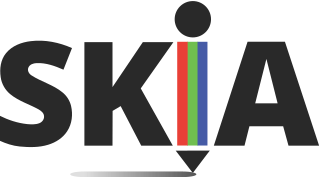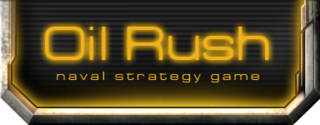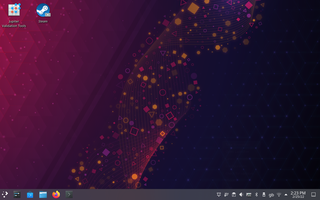Reiser4 is a computer file system, successor to the ReiserFS file system, developed from scratch by Namesys and sponsored by DARPA as well as Linspire. Reiser4 was named after its former lead developer Hans Reiser. As of 2021, the Reiser4 patch set is still being maintained, but according to Phoronix, it is unlikely to be merged into mainline Linux without corporate backing.
Mesa, also called Mesa3D and The Mesa 3D Graphics Library, is an open source implementation of OpenGL, Vulkan, and other graphics API specifications. Mesa translates these specifications to vendor-specific graphics hardware drivers.

PhysX is an open-source realtime physics engine middleware SDK developed by Nvidia as a part of Nvidia GameWorks software suite.

In computing, a benchmark is the act of running a computer program, a set of programs, or other operations, in order to assess the relative performance of an object, normally by running a number of standard tests and trials against it.

A free and open-source graphics device driver is a software stack which controls computer-graphics hardware and supports graphics-rendering application programming interfaces (APIs) and is released under a free and open-source software license. Graphics device drivers are written for specific hardware to work within a specific operating system kernel and to support a range of APIs used by applications to access the graphics hardware. They may also control output to the display if the display driver is part of the graphics hardware. Most free and open-source graphics device drivers are developed by the Mesa project. The driver is made up of a compiler, a rendering API, and software which manages access to the graphics hardware.
UNIGINE is a proprietary cross-platform game engine developed by UNIGINE Company used in simulators, virtual reality systems, serious games and visualization. It supports OpenGL 4, Vulkan and DirectX 12.
Linux gaming refers to playing video games on a Linux operating system. Because many games are not natively supported for the Linux kernel, various software has been made to run Windows games, such as Wine, Cedega, and Proton, and managers such as Lutris and PlayOnLinux. The Linux gaming community has a presence on the internet with users who attempt to run games that are normally not supported on Linux.

Phoronix Test Suite (PTS) is a free and open-source benchmark software for Linux and other operating systems which is developed by Michael Larabel and Matthew Tippett. The Phoronix Test Suite has been endorsed by sites such as Linux.com, LinuxPlanet, and Softpedia.
Video Decode and Presentation API for Unix (VDPAU) is a royalty-free application programming interface (API) as well as its implementation as free and open-source library distributed under the MIT License. VDPAU is also supported by Nvidia.

The Skia Graphics Engine or Skia is an open-source 2D graphics library written in C++. Skia abstracts away platform-specific graphics API. Skia Inc. originally developed the library; Google acquired it in 2005, and then released the software as open source licensed under the New BSD free software license in 2008.

Oil Rush is a tower defense real-time strategy game developed by UNIGINE Holding S.à r.l. using their Unigine engine technology. Set in a flooded, post-apocalyptic world, the game consists of players fighting over control of the world's last remaining oil reserves. The game was released as a digital download for Microsoft Windows, Linux, and OS X.

Kot-in-Action Creative Artel is an independent video game company headquartered in Del Rio, Texas and founded in 2008 by Alexander Zubov. Consisting of a core team of three people, they developed the Steel Storm series for Microsoft Windows, Mac OS X, and Linux platforms.

SteamOS is a Linux distribution developed by Valve. It incorporates Valve's popular namesake Steam video game storefront and is the primary operating system for Steam Machines and the Steam Deck. SteamOS is open source with some closed source components.

Windows Subsystem for Linux (WSL) is a feature of Windows that allows developers to run a Linux environment without the need for a separate virtual machine or dual booting. There are two versions of WSL: WSL 1 and WSL 2. WSL 1 was first released on August 2, 2016, and acts as a compatibility layer for running Linux binary executables by implementing Linux system calls on the Windows kernel. It is available on Windows 10, Windows 10 LTSB/LTSC, Windows 11, Windows Server 2016, Windows Server 2019 and Windows Server 2022.
Zstandard, commonly known by the name of its reference implementation zstd, is a lossless data compression algorithm developed by Yann Collet at Facebook. Zstd is the reference implementation in C. Version 1 of this implementation was released as open-source software on 31 August 2016.
The AMD Optimizing C/C++ Compiler (AOCC) is an optimizing compiler from AMD targeting 32-bit and 64-bit Linux platforms. It is a proprietary fork of LLVM + Clang with various additional patches to improve performance for AMD's Zen microarchitecture in Epyc and Ryzen microprocessors.
Transient execution CPU vulnerabilities are vulnerabilities in a computer system in which a speculative execution optimization implemented in a microprocessor is exploited to leak secret data to an unauthorized party. The classic example is Spectre that gave its name to this kind of side-channel attack, but since January 2018 many different vulnerabilities have been identified.
EROFS is a lightweight read-only file system initially developed by Huawei for the Linux kernel.
Heaven Benchmark is benchmarking software based on the UNIGINE Engine. The benchmark was developed and published by UNIGINE Company in 2009. The main purpose of software is performance and stability testing for GPUs. Users can choose a workload preset, Basic or Extreme, or set the parameters by custom. The benchmark 3D scene is a steampunk-style city on flying islands in the middle of the clouds. The scene is GPU-intensive because of tessellation used for all the surfaces, dynamic sky with volumetric clouds and day-night cycle, real-time global illumination, and screen-space ambient occlusion.
Superposition Benchmark is benchmarking software based on the UNIGINE Engine. The benchmark was developed and published by UNIGINE Company in 2017. The main purpose of software is performance and stability testing for GPUs. Users can choose a workload preset, Low to Extreme, or set the parameters by custom. The benchmark 3D scene is an office of a fictional genius scientist from the middle of the 20th century. The scene is GPU-intensive because of SSRTGI, proprietary dynamic lighting technology by Unigine.








